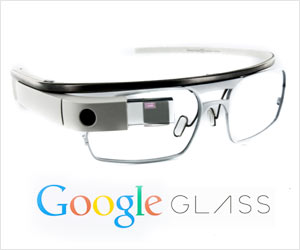Part 104: Disability Corner: The Universality of Accessibility
Disability Corner: The Universality of AccessibilityI have yet to run into somebody who knows what a curb cut is by name, but once I explain it, everyone knows what I’m talking about.

Curb cuts are those little dips where elevated sidewalks briefly meet the ground in urban areas, usually about wide enough to fit a couple people, sometimes with colored bumpy patches near the bottom. No one knows their name because no one thinks about them; like a lot of good urban design, they exist to fade into the background, making people’s lives easier without distracting them from whatever else they’re doing. And that was us.
In 1963, a disabled British activist named Selwyn Goldsmith released Designing for the Disabled, a manual proposing fundamental principles of architectural and civic design still in use over 50 years later; though he didn’t invent them (the first one showed up in Kalamazoo in ‘45 as a way to help World War II veterans), he was the first to articulate widespread curbcuts as a measure to help wheelchair users in general, and his arguments proved so persuasive his home country started passing laws mandating them a couple years later. A group of activists in Berkeley, California talked the city government into doing something similar in 1969. And then the government sat on it for a year, letting complaints vanish into the bureaucracy until the activists decided to take action. Their ringleader, Ed Roberts (his wheelchair’s in the Smithsonian now) had them start pouring ramps in the middle of the night, dodging arrests as they went. As you can imagine, forcing disabled people to deface public property to survive wasn’t exactly a great look, so City Hall gave up and implemented the curb cuts. And then gradually noticed something: most people who used them didn’t use wheelchairs. Anybody who had to use some other wheeled device – strollers, rolling suitcases, dollies for unloading cargo, skateboards (this was California) – made a beeline to the cuts instead of hauling their stuff up the side of the curb. Old people used them to avoid taking a big treacherous step they weren’t sure their knees could take, and young people used them rather than try and clamber up concrete. People moving slowly under heavy loads took them because smaller steps are safer and take less energy, and people traveling light out on a run took them because it didn’t break their stride. Disabled people may have been the target audience, but everyone seemed to benefit.
I kept seeing references to a study of curb cuts at a Florida mall in my research that proved 9 in 10 pedestrians went out of their way to use them instead of just stepping over. I couldn’t find the study, but I live in and around Chicago, where curb cuts are everywhere (it’s one of the most accessible cities in the US), and we really will all you please go 30 feet over, down a curb cut, and 30 feet back instead of just taking the step down. Part of that’s peer pressure, part of it is just laziness. But part of it is safe habit, because Chicagoland both sees a lot of rain and snow and sits at just the right climate to vibrate above and below freezing the colder parts of the year. Snow here tends to melt, freeze, melt again, and refreeze until it forms black ice.

Black ice is extremely smooth, hard, melts very slowly, and cannot be seen unless the light hits it just right or you get on your hands and knees to look – and it forms almost exclusively on roads and sidewalks, right where people run into it. If you’re lucky, your encounter with it will go something like one I had halfway through college when I rushed out the door just after a flashfreeze while still putting my belt on. I stepped on a rim of black ice at the top of the steps, slipped, flew out, and got enough airtime to start flailing; my pants came part way off, I cracked my tailbone against the steps halfway downs, and I ended up sitting stunned on the ground, staring groggily at the pair of jeans now around my ankles while the snow soaked into my underwear. If you aren’t lucky, you slip and fall hard enough to break bones in a place so dangerous to walk that people can’t go over and help you, or your car catches some and you spin out into traffic. Every time you take a step down from the sidewalk in winter, you take your life into your hands; there’s no way to predict if your foot will make contact with black ice or not. It’s even possible for snow or slush to build up over it, making a stretch of pavement looks safe until you put all your weight on it to take your other foot down. But curb cuts, especially with those contact pads installed, make things far, far easier. You just go down one carefully (black ice can still form there, though with the slope and the landing strip it’s rare and patchy instead of smooth sheets of solid ice crystal) and hobble around to your car. Black ice still regularly kills people, but having a way to mitigate the risk has saved hundreds, possibly thousands of lives over the years. And all because society bowed to the will of wheelchair users.
They call this the curb cut effect: the idea that successful accessibility measures benefit abled people as much as, if not more than, the disabled people they help. As is common for disability studies, academic research on the concept seems pretty scarce and limited mostly to grad student papers, and its public penetration seems limited to blog posts and articles in small magazines. As is also common in disability studies, a lot of the data is already there, it’s just that nobody with any clout has bothered to synthesize it yet. Like, I found a study on university students and their opinions of close captioning that showed 98.6% of people surveyed approved of their presence and 85% regularly used them. Less than one in 10 use them specifically because they had a disability, even though that’s usually why they put those captions in place; instead, most people use them to aid comprehension, whether they spoke English as a second language and use the clarification, wanted to make up for poor audio quality, or, overwhelmingly, used them as a learning aid. These were not disabled people; the study drew on thousands of students across the country regardless of their status or identity, but the total number of people who used close captioning beat out the number of disabled people who used it by an order of magnitude, practically the whole sample size. That’s the kind of data that raises eyebrows and draws critiques from scientists dead certain somebody fudged the results in other disciplines.
It sounds right to me, though. Let me put it this way:
"”The Curb Cut Effect, or Why It Is Basically Impossible To Appropriate From Disabled People” posted:
You see, people don’t generally want to accommodate disabled people any more than they have to. Accommodating disabled people is a pain in the neck, and disabled people are generally a small and relatively powerless group with limited ability to complain. However, if any TV network tries to remove closed captioning, they won’t just have to put up with complaints from Deaf people. They will have to put up with complaints from everyone who has ever tried to watch TV in a noisy bar. The latter is far more likely to strike fear in the TV executive’s heart.
You see this fact, this broad applicability of accessibility measures, everywhere you look once you start digging into universal design. Color palettes designed to get around colorblindness tend to be easier to distinguish under stress because the contrast between them is so universal. User interfaces designed for use by people with anxiety disorders take less time and effort to use since the process strips out cruft and distractions that would otherwise slow people down. Workplaces designed around accommodating sensory issues see small but universal bumps in productivity as distractions are removed for everyone. And, of course, 9 out of 10 people detour to use curb cuts. So, why is the curb cut effect only barely a thing? Why aren’t people rolling it out on the regular, let alone studying it? Well, probably the same reasons Google Glass failed.
You remember Google Glass, right? Those ugly-ass goggles that told you you were dealing with an insufferable tech bro at best and someone actively recording you at worst? I was genuinely surprised to find out that not only is Google still selling them, but apparently they’ve moved on to a second edition. You have to special order them, though, and mostly they go to specialists in medical or scientific fields. As much money as Google sank into selling it to the public, it failed in the mass market. Now, if you just read the Wikipedia article, you get the impression it failed because of privacy concerns. And it’s true, as much as they tried to downplay it, you really could record just about anything with those things, legally or not. There were rumors it was compatible with MORIS, a facial recognition after designed for use by cops to identify and arrest people. I’m not interested in defending Google Glass.
But go back and read that Scientific American article. The guy who wrote it, David Pogue, is a seasoned tech writer with a history of digging up little ways tech companies bilk their customers and mounting pressure campaigns to stop them. He’s an insightful man with an attention to detail. So let’s return the favor and close-read that article. Watch how, as much as he dwells on the intentions of others, he focuses entirely on himself whenever he can. Think about how he repeatedly mentions the smugness of people who use it, but the only time he interacts with someone wearing one he talks entirely about his own behavior, not hers. Try and fail to figure out what she thought of the situation. Observe how he confidently predicts the precise behavior of people and organizations in a field that fetishizes defying expectations. Read this line:
quote:
There she was, wearing this creepy-looking, faux-futuristic forehead band
Now read this article. If you click on one link in this post – and there are many links in this post you should – make it this one.

Here’s an image of the things. On first glance, it’s pretty similar to normal glasses: the lenses, the band, that little bridge thing that sits on your nose. But then you have a band on top that bridges the lenses, a bunch of tech on the right leg, and a little plastic thing that sticks out over your eye. It has that same bulky, utilitarian look so much assistive technology does. We’ve seen over and over again in this thread the kind of harsh judgment our society heaps on people who dare to need accommodations without looking stereotypically disabled. So is it any wonder society looks at Glass users and decides they’re all glassholes? Combine the instinctive revulsion so many people feel looking at assistive technology with the perception that someone abled-looking using it is automatically abusing it and you get that instant hostile gut reaction Pogue described. Of course he thinks it looks creepy. Of course he assumes people will abuse its capabilities. Of course he doesn’t bother writing anything about his one encounter with it in the wild other than his own suspicion and discomfort. Tech writer or not, the part of his psyche that hasn’t changed since caveman days looks at Glass users tells him they’re dangerous, sick, know it, and want to interact with him anyway. But he’s a rational guy. He’s not gonna just throw everything at the wall; he evenhandedly dismissed concerns over distraction, after all. Security and privacy, though, THERE’S something real to worry about. That must be why. Of course he focuses on perceptions: that’s where his disgust comes from. Of course he notes that Google rep visibly isn’t recording him, then casts doubt on her and the technology involved: it’s about what he thinks of that technology, not how it’s actually used. And on a broader scale, of course the world assumed Glass users were all assholes guaranteed to abuse its capabilities: they already see abled people using assistive technology as shitheads using things not meant for them, so the privacy issues just added fuel to the fire. It didn’t help that when Google tried to stir up positive publicity, they started testing it for its use in treating autism (including sloppy experimentation on ABA sufferers, because of course they did). So they proved Glass really WAS assistive technology. The public’s instincts confirmed, they just doubled down, and Glass entered the dustbin of history.
(These instincts, I feel, are part of what drives resistance to masks and vaccines. To an abled person who embraces those concepts, if they are healthy, they do not need medical treatment. They instinctually grasp masks and vaccines are tools that exist to fill a medical need – they’re assistive technology, in other words – and since they’re abled, they don’t need it. Anyone who doesn’t need assistive technology but uses it anyway is a hypochondriac at best and actively malicious at worst. Therefore, they see imposing medical equipment or treatments on them as an insult, an assumption of disability, with all the assumptions of helplessness and incompetence that come with it. Combine that with the sponsorship of groups they don’t trust on logic they don’t fully understand and it becomes nefarious, a way these mysterious groups can convince the gullible to submit to them. That’s why believers seem to hop between mutually exclusive conspiracy theories or insist their right to self-determination frees them from any obligations or identify mandates with the worst kinds of crimes and violations. Masks and vaccines can’t be useful to them. Just flat out. It’s obvious to them. They assume it’s obvious to everybody. So they fight back viciously against what they see as a threat. But there’s more going on there than just that, and let’s not get any further into politics.)
There’s a widespread perception, more common in some places than others but present throughout society, that if two or more mutually exclusive groups exist, they’ll inevitably start competing over resources or influence or power or anything else they’re both interested in. In its weaker and more idealistic forms, this perception frames competition as a moral good because competitors have do better in order to succeed: businesses compete for sales by producing better and more affordable products, charities compete for donations by proving more effective at their missions, political parties compete for votes by proving their platform is better suited to the needs of the people. Enlightened self-interest naturally pushes people towards the best possible decisions, you know. Trouble is, well, everybody’s self-interested but nobody’s reached enlightenment. If at any point the stakes get too high, then when you have to choose between keeping what you have now and shooting for some vague benefit down the line, you’ll probably opt not to let your power or happiness or safety go down the drain instead of taking a risk that may not get you what you want. The higher the stakes, the more likely it is you’ll resort to terrible behavior just to keep up. Businesses use predatory pricing, abuse their workers, buy off politicians, or just ignore the law, knowing it’s cheaper to bury their poorer victims in lawsuits, settlements, and NDAs then change profitable business practices. Charities spend their money on publicity campaigns and building reputations, papering over, say, the Red Cross’s incompetence, the Salvation Army’s active malice, or Live Aid helping fund the deaths of hundreds of thousands. Political parties blame every issue on the opposition until they look like the only bulwark against the end of civilization, then ignore the needs of their voters while collecting donations, monkeying with the electoral system, or straight-up seizing power. Plus, if you put a person’s identity on the line, then that perception can fuel horrors because that perception implies whatever wins is superior and whatever loses will be subjugated or erased. Religions compete over where people’s souls go. Ideologies compete over how people structure their lives. Genders compete over who dominates the household. Ethnic groups compete over what resources they can claim. At its most extreme, it means the idea of peace between groups is inherently impossible and anyone who says otherwise is trying to take out the competition; there is no room for cooperation, only victory, and any act is justifiable so long as you come out on top.
But that’s an extreme. Just because you’d benefit from doing something horrible doesn’t mean you’re going to do it, and most people don’t let that perception override their morality. There’s plenty of room there for suppressing that instinct as a gesture of respect or cooperating on issues that affect everybody or supporting groups that are less competitive than yours. Hell, you could say the last one increases healthy competition by giving capable people otherwise screwed over by the market, society, or just life a chance to actually contribute in proportion to their ability. I owe my job to that line of logic. But there’s always that instinct, that silent voice in the back of your head that tells you life is a zero-sum game and there’s always a competition somewhere. That same voice also points out places where the competition feels rigged, like somebody already tilted the scales and everything feels off. It tells you to push back, because it could screw you over and it could screw people you care about over and it could screw anybody over and it’s unfair and it’s wrong and it needs to be fixed. At its most functional, enlightened self-interest lives off that instinct because it takes abstract social wrongs and makes them personal; they become violations of your vision of how the world works, things you feel compelled to fix because genuinely leveling the playing field is the only way to make that cognitive dissonance go away.
In theory. But hijacking self-interest isn’t reaching enlightenment, and that instinct is why universal design never seems to make much of an impact. To a large chunk of the population, abled people using assistive technology like disabled people gives users an unfair advantage because, to them, assistive technology exists only to make disabled people competitive. You ask the people that harass wheelchair users who aren’t “obviously disabled” why they do what they do, you hear a lot of accusations of laziness, entitlement, and arrogance. Dig deeper, start parsing out their statements, and eventually you get to the truth of the matter: they think the people they harass are taking stuff disabled people need away from them for their own benefit. Sure, sometimes abled people try to lay their hands on assistive technology, but as a rule making it publicly available (and cheaper) tends to help us, especially given underdiagnosis and the expense of medical equipment; the spread of weighted blankets put anxiety relief equipment in the hands of people who needed it as anxiety disorders increased and then skyrocketed, and the fidget spinner craze gave a lot of kids a lot of stim toys really, really fast.

I have a version of this model by my desk. Each of its three arms has a flexible button that flips in and out when I press it, and they all spin around a central axle when I hold it and black one of the arms. It cost $4.99 at Walgreens and its most efficient tool I’ve ever had to keep me on track during meetings. As for assistive technology making life easier? In high school, I remember one of the school douchebags got a pair of crutches one day and started using them around school. We made fun of him for being too lazy to walk (and also being really sweaty). Then I sprained my ankle in college and had to use crutches of my own, and turns out, the reason he was sweaty was because it takes a substantial amount of effort to haul your bulk around on the damn things. Assistive technology makes life easier, but it doesn’t make it easy; between accessibility issues and the sheer effort required to use it most of the time, the costs outweigh the benefits. Abled people who think assistive technology gives you a free ride often change their minds after spending time with it. But that division is so strong it takes more than simple facts to break it
When people with the power to implement universal design hear about it, more often than not they dismiss it as something for disabled people with the ideological equivalent of a marketing spin on it. At the end of the day, they look at the fact that, for all universal design helps abled people, it helps disabled people more, and treat it like something only disabled people want, something that belongs to the disabled group. All the studies in the world on how they can help your citizens or customers or employees won’t pierce that resistance because it isn’t rational, at least not past the first layer or two; they deem it a minority issue and treat it with the same care and respect people in power usually afford minority issues. So it gets ignored, or delayed indefinitely or watered down until it doesn’t matter, and people suffer for it.
Ableism, of course, also plays a role here, as it does everywhere else in this disability corner; it’s what fuels that gut reaction, makes people dismissive, and enforces the divide between abled and disabled in the first place. But society at large barely acknowledges its existence. Tackling it is (literally) the work of a lifetime, probably several. That isn’t what accessibility is for. Accessibility as a concept exists to make people’s lives easier right now. You don’t have to start protests about it or anything to start seeing its effects on just about everyone.
Way, way back, I revised the LP to repeat the text in images below the images themselves and labeled each portrait before lines of dialogue. Most LPs do neither because it takes extra work to put them in or transcribe things if you don’t have a script, and that work builds up over time. I did it to make it possible to read the LP with a screenreader (not that this LP is that screenreader-friendly, but I can only go so far until the forum implements new features). And then I realized not shifting my eyes between different text sizes and fonts greatly reduced eyestrain, and I found there was something elegant to the format one particularly virtuous poster came up with for portraits that draws your eyes in and down as you read. If you want a good example of how the universality of accessibility works, here’s your example: measures intended to help a specific group of disabled people paid off and made the reading experience so much smoother. If you guys want to, I encourage you trying to spread the format; at some point I’m going to take that workflow disability corner I cobbled together and restructure it into a guide for the Tech Support Fort and see if I can’t get people using it elsewhere. What kind of activist would I be if I didn’t shove my nose in where it didn’t belong
 ?
?